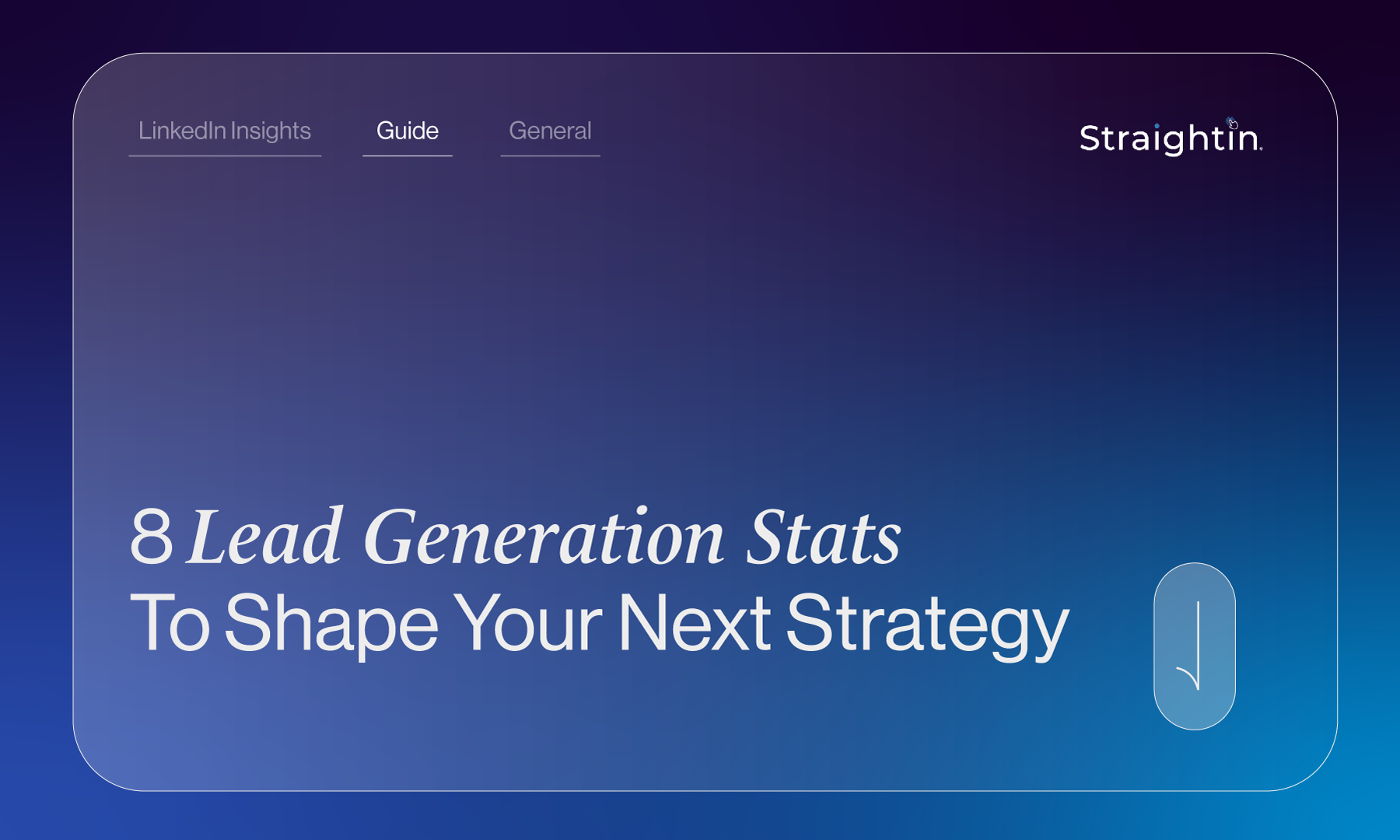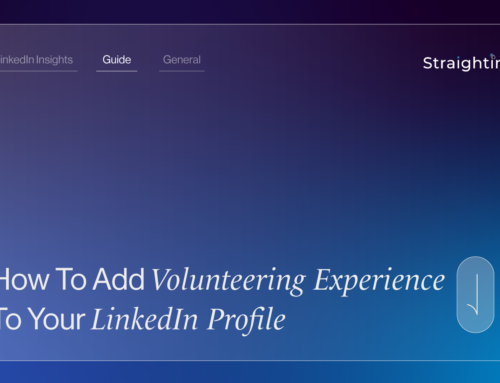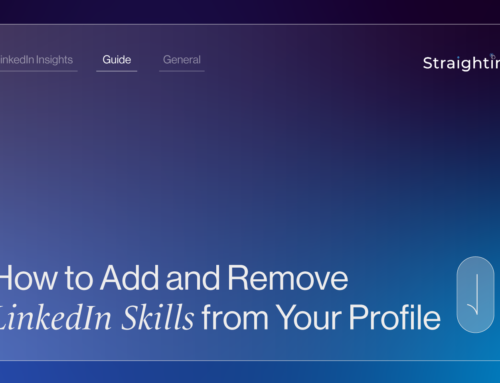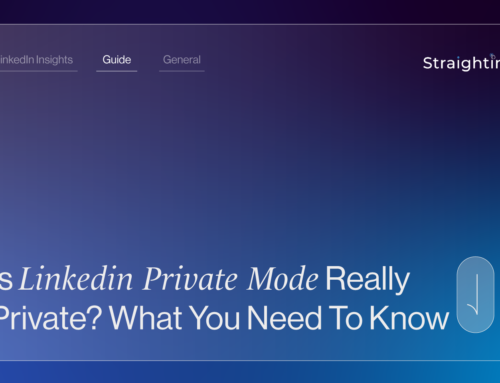Lead generation is an important part of any business’s sales and marketing strategy. It helps to increase awareness of your brand, position your business in front of key industry figures, and appeal to a wider audience of people.
If you’re interested in learning about lead generation and how it can improve the prospect pipeline of your business, read our blog on the top 8 lead generation stats below. Learn what the latest trends are in lead generation so you can shape your strategy…
Get help with your lead generation from LinkedIn Manchester agency, StraightIn. Contact us to find out more about how we can help you get tangible results.
1. The necessity of landing pages (source)
According to research conducted by HubSpot, 44% of marketers aim to generate leads with landing pages. As they are designed to engage users and specifically convert them, it’s no surprise that they are a valued tool for lead generation. If you’re interested in creating your own landing page for lead generation, ensure you:
- Tailor it to a specific audience
- Offer a way to capture information on leads
- Create an impactful call to action
2. 50% of people make a purchase from email marketing each month (source)
According to Forbes, 50% of consumers make a purchase from a marketing email each month. This is down to a few reasons, but most notably – it arrives right in the inbox of your prospect, offering a personalised touch. To make your email marketing stand out, ensure you:
- Include a catchy punchline
- Personalise the content
- Use A/B testing to refine and reassess
3. Including videos on landing page content can increase conversions by 80% (source)
Research from Unbounce shows that including videos in landing page content increases conversions by 80%. This is likely for a few reasons, including that information in video content is easier to process than other types of formats. Furthermore, it can also engage viewers by creating a stronger emotional reaction. When doing so, ensure you:
- Keep videos to the point
- Include closed captions to be more accessible
- Ensure you put the video above the fold
4. Most searches are conducted by mobile phones (source)
According to Sistrix, most searches are conducted on mobile phones – amounting to approximately 64%. With this in mind, marketers need to ensure their landing pages are optimised for mobile searches. For example, make sure:
- Your CTAs are clickable
- You have fast loading pages
- You offer short contact forms
5. Most leads take time to nurture (source)
Research from Marketing Donut reveals that most leads you generate will take about three months before they choose to convert – showcasing the importance of nurturing your prospects and guiding them through the sales funnel. To do so, ensure you:
- Personalise your advertising and messaging to them
- Provide value through content
- Build trust with testimonials
6. Sponsored LinkedIn InMail has a high open rate (source)
The platform itself reports that businesses that use sponsored LinkedIn InMail will on average see an open rate of 52%. Since InMail allows businesses to get directly in touch with decision leaders, it means that they can get their unique proposition in front of them instantly – and unlike with regular email campaigns, they can see whether they are interested or not. So your LinkedIn InMail gets a high open rate, ensure you:
- Provide professional context – so you can be taken seriously right away
- Use a punchy subject line to grab the reader’s attention
- Take advantage of the platform’s clickable CTAs
7. The highest amount of open rates occur between 9 am-5 pm (source)
Campaign Monitor reports that 53% of emails are opened between 9 am and 5 pm – excluding lunchtime hours. The platform also reveals that, if this were to be narrowed down to a specific peak time, the best hour to send emails would be 3 pm. To ensure your emails are opened by your viewers, take the following steps:
- Keep it out of the spam folder – avoid using spam words like free, urgent, or click here
- Optimise the subject line with keywords – such as boost, or increase
- Use a recognisable email and sender name
8. Email databases decay, ensure you update yours (source)
Finally, our last statistic is about email databases. According to Hubspot, email marketing databases decay by 22.5% every year – so it’s important to keep yours updated. Some tips for doing so include:
- Regularly remove bouncebacks and unsubscribers from the databases
- Run re-engagement campaigns to see who is interested
- Refresh lead capture strategies to reengage readers
Generate leads on LinkedIn fast with a strategy from StraightIn
Don’t underestimate the efficacy of generating leads on LinkedIn, especially if you’re a B2B business. Not only can you refine the quality of your prospects thanks to the advanced search filters the platform provides, but you can also share your expertise with industry leaders and connect on the latest sector trends.
If the prospect of creating a LinkedIn lead generation strategy sounds daunting, you might wish to outsource the process to a leading agency such as StraightIn. When you work with us, we commit to understanding your business’s specific offering, and how we can use this to best appeal to your customers.
Contact us today to find out more about how we can help you. Call 0161 518 4740 or email grow@straight-in.co.uk.
Lead generation: FAQS
What is lead generation?
Lead generation is the process of identifying prospective customers of your business, so you can establish how best to appeal to them. The more targets you can identify, the more leads you can generate (especially if they’re of high quality).
These audiences are targeted based on their shared demographics with your existing customers, so you can determine how likely they are to make a purchase from you/use one of your services.
Why is lead generation important?
Lead generation is important for several reasons.
Not only does it help you reach a wider audience, but it also helps you refine the quality of your prospects, so you can make sure you’re spending your time and energy engaging with prospective customers, rather than people who aren’t likely to convert.






